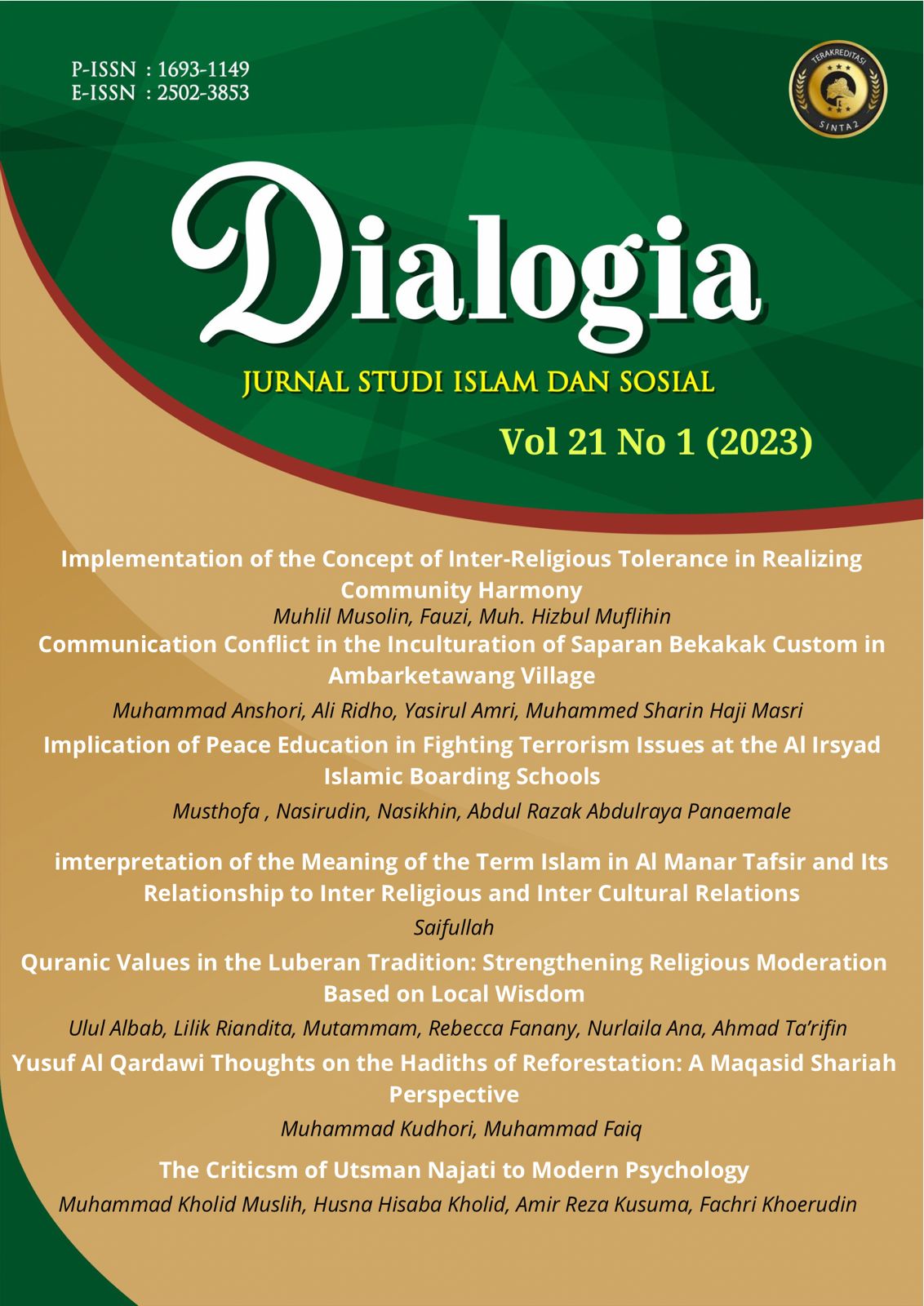Corak Identitas Teologi Muslim Tionghoa di Eks Karesiden Kediri Dalam Konteks Keberagamaan Pasca Reformasi
DOI:
https://doi.org/10.21154/dialogia.v21i1.5840Kata Kunci:
, Theological Identity, Tionghoa Ethnic Kediri, Religious ReflexionAbstrak
This research examines the hidden intensity of Chinese Muslim diversity in the former Kediri Residency. Focuses on Theology of Indonesian society with its addition to socio-religious organizations, coupled with the motive for the entry of Chinese people into Islam which does not seem to be entirely guided. As a basis, this article tries to trace a religious and spiritual practices which is theological style, its fiqh references, its interpretation references and its political additions, so that the Chinese Muslim theological style can be identified clearly. The Chinese Muslim Community or PITI is interesting to study more deeply, especially regarding its theological references. Furthermore, as an assumption to underlying, this research is that many previous studies have revealed that the entry of ethnic Chinese into Islam but their existence cannot be identified clearly. On the historical stereotypes, it has become a gap between Chinese Muslims and indigenous Muslims. In Addition, the minority that makes the Chinese Muslim community less smelly, the hatred and persecution that is often experienced makes the Chinese community ”“ and of course other minority groups ”“ even paranoid and apathetic. To obtain a sharp view on as an analysis, this research make uses of uses Ricoeur's Critical Phenomenology approach with reflective as the main feature to convey the intensity of religious awareness living in their community.






